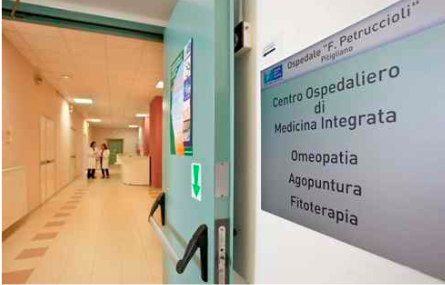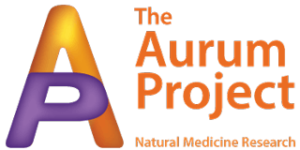Research in homeopathy has steadily grown over the years. Already a decade ago, researchers pointed out that even though complementary and alternative medicine, including homeopathy, has become more important in health care, more controlled studies examining their effectiveness are required (Bellavite et al., 2011). To address this gap, more and larger studies need to be undertaken to evaluate homeopathy’s role in the management of immunological disorders and abnormal susceptibility to infections (Bellavite et al., 2011).
In 2014, Banerjee pointed out that there are certain problems involved with conducting this research:
- Classical homeopathy involves an extensive consultation and an individualized treatment regimen
- Treatment methods are decided based on disease state and information gathered in the comprehensive homeopathic case-taking. Hence two patients with the same diagnosis may receive very different homeopathic treatments.
- The extensive consultations in themselves might have positive effects, at least for subjective outcomes.
- Clinical homeopathy, on the other hand, is delivered in much the same way that conventional drugs are prescribed. Complex homeopathy is similar to clinical homeopathy but more than one remedy is prescribed in a single formulation.
What is the difference between classical/ individualised homeopathy and clinical homeopathy?
To clarify the difference Kushal Banerjee et al. defined the terminology in this way:
Classical/ individualized homeopathy: A single homeopathic remedy is selected based on the total symptom picture of a patient.
Clinical homeopathy: One or several single remedies are administered for standard clinical situations or conventional diagnoses.
Complex homeopathy: Multiple remedies are mixed into a standard formula to ‘cover’ a person’s symptoms and diagnoses.
Isopathy: Remedies are made from the causative agent in an infectious or toxicological condition.
Homeopathy Research for Allergies, Rhinitis and Hayfever
In research, when classical homeopathy is used, any homeopathic medicine may be selected based on comprehensive case taking.
In clinical homeopathy, for example, Allium cepa (a common homeopathic remedy from onions) may be prescribed based on indications that match the clinical picture of allergic rhinitis.
In complex homeopathy a preparation containing different remedies, for example: Luffa operculata, Galphimia glauca, Histamine and Sulphur may be used.
In isopathy, a preparation from an allergen such as Betula (birch) may be used.
In practice, medicines used by clinical homeopaths may also be prescribed by classical homeopaths should they be indicated.
Homeopathy research study in Italy
In Italy, the Centre for Integrated Medicine in Pitigliano, Tuscany, is an innovative hospital providing homeopathy and acupuncture alongside conventional medical care.
Over a four year period, almost a third of the patients referred to the centre, presenting with seasonal and perennial respiratory allergies as their primary complaint (e.g., asthma, bronchitis, rhinitis). The centre conducted research using a homeopathic protocol to treat 430 outpatients from 2011-2014. Outpatients were treated with both individual remedies and therapeutic complex remedies. Their general experience was positive and there was improved quality of life and reduction of conventional drugs.

Choice of the therapeutic remedies was based on the specific pathophysiological symptoms of the allergy. They were prescribed alongside the constitutional remedies, which were designed to support the ‘totality’ of the patient based on more general symptoms and patient characteristics.
At first follow-up, after 2 months of treatment, 75% of patients with seasonal respiratory allergies showed a high level of improvement, with many patients experiencing complete resolution of their symptoms. These improvements were maintained throughout the 2 year follow-up period. Forty five percent of patients with perennial respiratory allergies showed similar levels of sustained improvement in their symptoms.
Compliance with treatment was high, with many patients returning for further homeopathic treatment of other conditions. No adverse reactions were reported.
'Magistral' Treatment: Therapeutic or complex remedies
‘Magistral’ is a pharmacological term for a treatment that is prescribed for a particular patient and prepared by adding single remedies one by one. In other words, a personalised (or ‘bespoke’) combination remedy that matches symptoms as well as the patient’s constitution and psychological profile as understood by the homeopath.
In the vast majority of cases (95%), the homeopathic treatment involved the prescription of a ‘magistral’ homeopathic complex medicine as well as the constitutional remedy.
The therapeutic remedies most frequently used in magistral treatment were: Arsenicum album 9 or 15c; Poumone histamine 30c; Allium cepa 9c; Euphrasia off. 9c; Nux vomica 9c; Blatta orientalis 9c; Antimonium tartaricum 9c; Ipecac 9c. The individualized remedies prescribed according to the characteristics of the patient were most commonly: Lycopodium 30c; Arsenicum album 30c; Silica 30c and Pulsatilla 30c.
The adoption of an integrated approach which included homeopathic magistral prescription satisfied three main requirements of treatment provided within the Pitigliano context in Italy: (1) creating uniformity and reproducibility of the protocol across patients; (2) facilitating patient compliance with treatment; and (3) reducing the cost of therapy. In fact, using the magistral approach had an average cost of 12-15 Euros per month of treatment, per patient.

Homeopathy Research: Allergies, Rhinitis and Hayfever
Conventional drug use for hayfever symptoms was significantly reduced
Medications for hay fever were significantly reduced by the end of the 2 year follow-up period. All patients with seasonal respiratory allergies had reduced their consumption of cortisone, bronchodilators or antihistaminic drugs to zero whilst patients with perennial allergic syndromes had reduced their conventional drug usage by 85 to 100%. The significant reduction in cost of treatment was also noted by the participants.
The setting for this Homeopathy research into allergies, rhinitis and hayfever was the hospital in Pitigliano, Tuscany (Italy). It is the first hospital in Italy to put into practice a model of Integrated Medicine. This clinical setting caters for the use of complementary medicine (homeopathy and acupuncture) alongside orthodox therapies (conventional medicine). This innovative setting has doctors who are experts in complementary and alternative medicine and the rest of the hospital personnel working together as equals.
Reviews in Homeopathy for allergic rhinitis and allergies
A systematic review (Banerjee et al., 2017) evaluated the efficacy and effectiveness of homeopathy in the treatment of seasonal or perennial allergic rhinitis. In this review, 11 studies were included that were RCTs comparing homeopathy (individualized, clinical, isopathic, or complex) with placebo, conventional treatment, or other homeopathy in patients of any age. Only one study was not placebo-controlled. From their conclusions it seems that the efficacy of treatment using isopathy alone is unclear; however, the use of either Galphimia glauca or a homeopathic nasal spray may have small beneficial effects on the nasal and ocular symptoms.
In an integrative review, the authors summarised studies looking at the effectiveness of homeopathic treatment in chronic allergies (Piauiense et al., 2020). Out of 17 included articles between 2000 and 2019, 14 had positive outcome demonstrating homeopathy’s effectiveness in reduction of chronic allergy symptoms and 3 studies failed to demonstrate the efficacy of homeopathy when compared to conventional treatment (Piauiense et al., 2020).
Research studies in Homeopathy for Allergic Rhinitis
In a double-blind multi-centre randomised controlled trial (RCT) of homeopathy versus placebo in allergic rhinitis, 50 patients took part with perennial allergic rhinitis (Taylor et al., 2000). Patients were randomly assigned to either an oral 30C homeopathic preparation of principal inhalant allergen or to placebo. The authors found that those in the homeopathy group had significantly improved in nasal airflow compared with the placebo group. (Taylor et al., 2000). Both homeopathy and placebo groups had improvement in symptoms but this improvement was higher in the homeopathy group. Some aggravations of rhinitis symptoms were noted as being more common with homeopathy than in placebo group.
In a prospective multi-centre observational study (Trompetter et al., 2015), the authors explored using the homeopathic complex remedy (Pascallerg®) in treating allergic rhinitis in 123 patients over 4 weeks. Authors found that many of the symptoms greatly improved, patients’ quality of life increased and the remedy was well tolerated (Trompetter et al., 2015).
In a randomized controlled clinical trial in the southwest region of the US (Kim et al., 2005), the research explored a homeopathic treatment (prepared from common allergens such as tree, grass or weed species native to southwest region of the USA) in treating seasonal allergic rhinitis, versus placebo. In their 4-week study, 40 participants between the ages 26-63, who had been diagnosed with severe seasonal allergic rhinitis, took part. They found that the homeopathy group improved from baseline to 4 weeks compared to placebo group on all measures, including the rhinoconjuntivitis quality-of-life questionnaire (RQLQ), Short-Form-36 quality of life (SF-36) measure and the work productivity and activity impairment (WPAI) scale, and no adverse events were reported.
In a case series evaluation, Pandey (2016) assessed the clinical effectiveness of homeopathy in improving hay fever symptoms. In total, 8 patients were observed over two years using MYMOP questionnaire (Measure Yourself Medical Outcome Profile) at baseline, after 2 weeks and after 4 weeks of taking homeopathy. Patients were prescribed either a single remedy or multiple remedy depending on the symptom presentation. The author found that scores on MYMOP had improved for nose, eyes and wellbeing after 2 and 4 weeks of homeopathic treatment, showing that individualised homeopathic treatment was associated with alleviation of hay fever symptoms for patients.
Homeopathy research studies
Ferreri R, Bernardini S, Pulcri R, Cracolici F, Rinaldi M, Porciani C. Improved quality of life and reduction of conventional drugs in allergic patients treated with homeopathy. HRI Research in Focus, Issue 31 Summer 2016.
Bernardini S, Cracolici F, Ferreri R, Rinaldi M, Pulcri R. Integration between orthodox medicine, homeopathy and acupuncture for inpatients: Three years experience in the first hospital for Integrated Medicine in Italy. J Tradit Complement Med. 2015; 5(4): 234-40
Kushal Banerjee, Ceire Costelloe, Robert T Mathie, and Jeremy Howick. Homeopathy for allergic rhinitis: protocol for a systematic review. 2014.
Homeopathy for Allergic Rhinitis: A Systematic Review 2017
Bellavite P, Marzotto M, Chirumbolo S, Conforti A. Advances in homeopathy and immunology: a review of clinical research. Front Biosci (Schol Ed) 2011;3:1363–1389.
Bruera E, Kuehn N, Miller MJ, Selmser P, Macmillan K. The Edmonton Symptom Assessment System (ESAS): a simple method for the assessment of palliative care patients. J Palliat Care. 1991; 7(2): 6-9.
Kim LS, Riedlinger JE, Baldwin CM, Hilli L, Khalsa SV, Messer SA, Waters RF. Treatment of seasonal allergic rhinitis using homeopathic preparation of common allergens in the southwest region of the US: a randomized, controlled clinical trial. Ann Pharmacother. 2005 Apr;39(4):617-24. doi: 10.1345/aph.1E387.
Pandey V. Hay fever & homeopathy: a case series evaluation. Homeopathy. 2016 May;105(2):202-8. doi: 10.1016/j.homp.2016.01.002.
Piauiense JNF, Viana MdL, Araujo RFdM. Effectiveness of homeopathic treatment in chronic allergies: integrative review. Research, Society and Development. 2020; 9(2):e139922192, 2020. doi: 10.33448/rsd-v9i2.2192.
Taylor MA, Reilly D, Llewellyn-Jones RH, McSharry C, Aitchison TC. Randomised controlled trial of homoeopathy versus placebo in perennial allergic rhinitis with overview of four trial series. BMJ. 2000 Aug 19-26;321(7259):471-6. doi: 10.1136/bmj.321.7259.471.
Trompetter I, Lebert J, Weiß G. Homeopathic complex remedy in the treatment of allergic rhinitis: results of a prospective, multicenter observational study. Forsch Komplementmed. 2015;22(1):18-23. doi: 10.1159/000375244.
====================================
Since you’re here…
More people than ever before are reading the Aurum Project blog. There is currently a surge of interest in natural therapies research. If you want to find out more about the latest cutting-edge natural medicine research and homeopathy news from Australia and the world, sign up to our newsletter. You won't regret it. It will only take a minute. Thank you. Click here to subscribe today.
